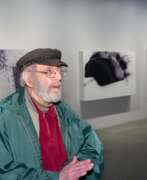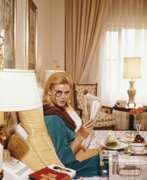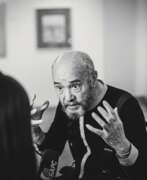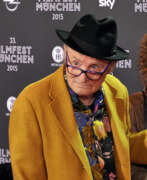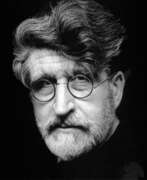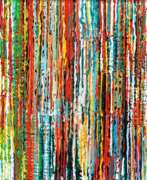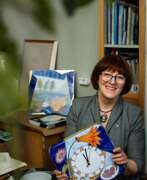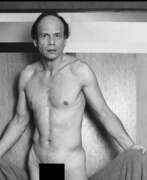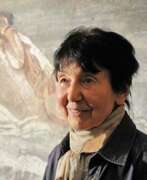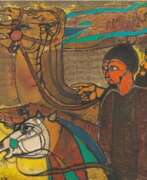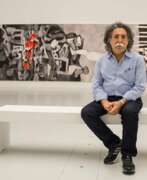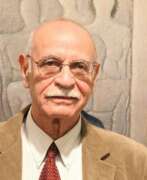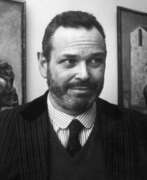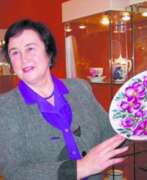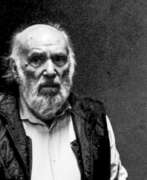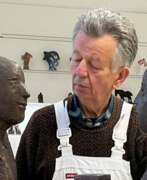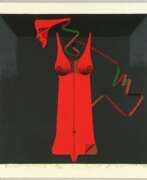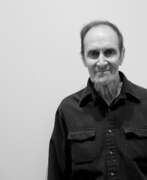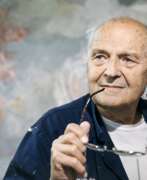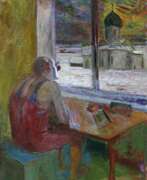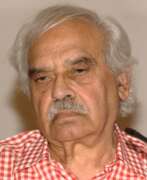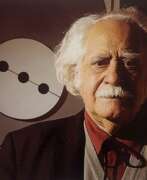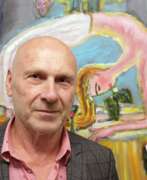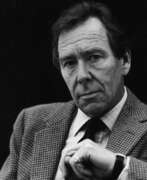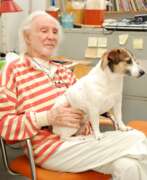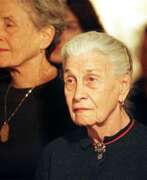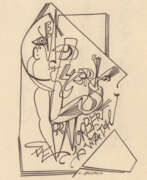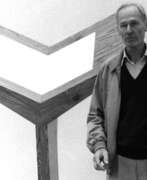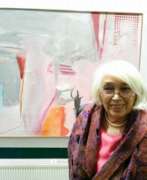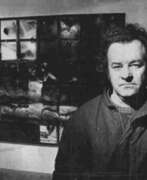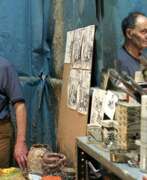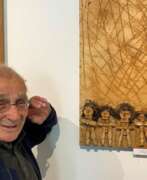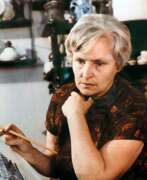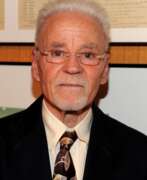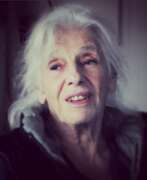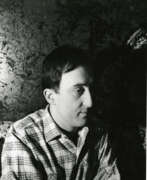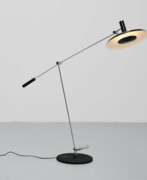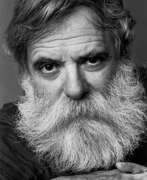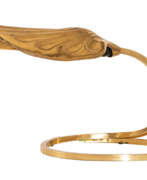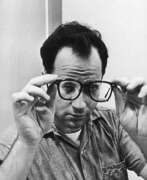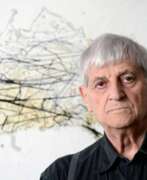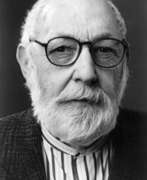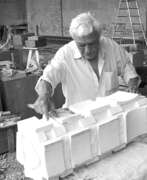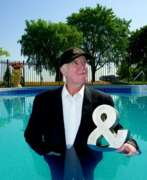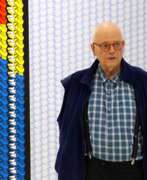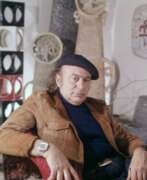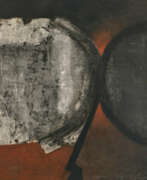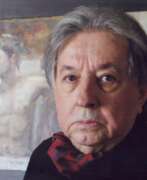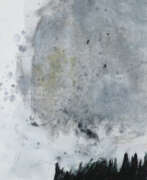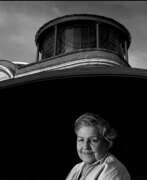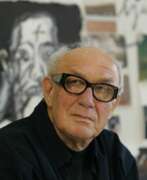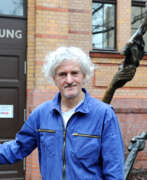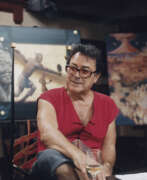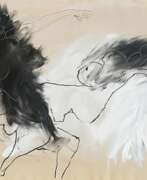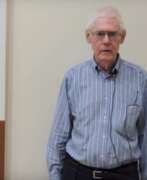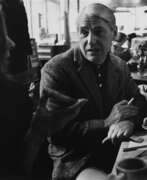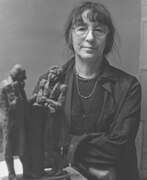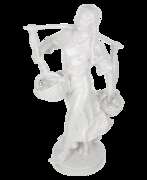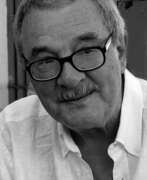Post War Art 21st century
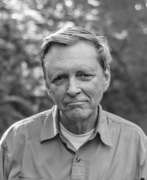

Robert Adams is an acclaimed American photographer known for his profound exploration of the American West's changing landscapes. His work, which gained prominence in the mid-1970s, delves into the tension between the natural beauty of the land and the marks of human encroachment. Adams's photography is a reflection on humanity's relationship with the environment, offering both a critique and a celebration of the landscape.
Robert Adams's notable series, such as "Turning Back" and "The New West," showcase his unique perspective on environmental and urban development issues. His work extends beyond just capturing images; it is a thoughtful commentary on the balance between nature and industrialization. His photographs, often devoid of people, focus on the land itself, telling a story of alteration and resilience.
Exhibitions of Adams's work, such as "American Silence: The Photographs of Robert Adams" at the National Gallery of Art, provide insight into his 50-year career and his ability to capture the silent yet profound narratives of the American landscape. His pieces are part of major collections and have been featured in numerous retrospectives, underlining his influence and significance in the world of photography.
For art collectors and enthusiasts, Robert Adams's work offers a poignant perspective on the American West, blending aesthetic beauty with critical environmental commentary. Engaging with his work invites reflection on our interaction with the landscape and our role in shaping the environment.
If you're interested in staying updated on Robert Adams's work and exhibitions, consider subscribing to newsletters from galleries and museums that feature his art. This way, you'll be informed about new displays of his work and opportunities to engage with his insightful perspectives on the American West.


Tamam Al-Akhal is a Palestinian artist and educator living in Jordan. She studied at the Fine Arts College in Cairo. From 1957 to 1960, she taught art at the Makassed Girls College in Beirut. In 1959, she married Ismail Shammout. Al-Akhal has exhibited in Egypt, Lebanon, Jerusalem, Jordan, the United States, Kuwait, England, China, Morocco, Berlin, Paris, Rome, and Vienna. She gave a series of lectures at the Jordan National Gallery of Fine Arts in 2009. Her art appeared on more than a dozen covers of Palestinian Affairs, a magazine published by the Palestine Liberation Organization. She was also head of the PLO's Arts and Heritage section. With her husband, she painted a series of large murals known as "Palestine: The Exodus and the Odyssey."
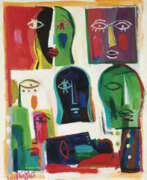

Saleh al-Jumai'e is an Iraqi artist noted for his works that explore the notion of tracks left by ancient heritage. His works often integrate Arabic calligraphy in an abstract artwork. Al-Jumaie and his cohort became the group of artists that defined 1960s Iraqi art. Although al-Jumaie is best remembered as a painter, he also designed posters and produced a number of book covers. His early work features Arabic lettering, but over time the calligraphy became fainter. His interest in exploring new media and materials was maintained throughout his career. The idea of tracks left by tradition is a theme that Jumaie takes up in much of his work. For example, Pages from Old Books is a series of mixed media artworks that creates an illusion of surfaces on which fragments of script have been written.
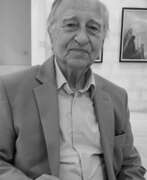

Saad Al-Tai is a contemporary Iraqi artist. He participated in several exhibitions in Baghdad and abroad. Al-Tai was a member of the Iraqi Impressionists Group. Despite the name of the group, Al-Tai was not categorically an impressionist, rather his style lent more towards cubist realism. For him, the colour of the painting was determined by its subject matter. Al-Tai is an award winning artist who, amongst other things, received Italian knighthood in 2005 in recognition for his efforts in fostering Iraqi-Italian cultural dialogue including founding and heading the Italian Language Department in 2002 at the College of Languages, Baghdad University.
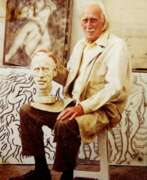

Harold Ambellan is an American painter and sculptor.
He studied sculpture and fine art in Buffalo before moving to New York City. The human figure is central to Harold Ambellan's work. He created monumental figures and drew extensively, leaving thousands of drawings. Ambellan was one of the participants in Roosevelt's Federal Art Project, which hired hundreds of artists during the Great Depression who collectively created more than 100,000 paintings and over 18,000 sculptures.
Ambellan remained committed to figuration in both his sculpture and painting. He was elected president of the Sculptors Guild of America in 1941, and that same year his work was exhibited in group shows at the Metropolitan Museum of Art in New York and the Academy of Fine Arts in Philadelphia.
In 1944, Ambellan participated in the liberation of Normandy as part of the U.S. Navy, then taught three-dimensional art at the Workshop School in New York City. In 1954, for political reasons, Ambellan moved to France and remained there for the rest of his life, working and exhibiting throughout Europe.


Valery Vladimirovich Androsov (Russian: Валерий Владимирович Андросов) is a Soviet and contemporary Russian artist. He is known as a sculptor, architect, designer, painter, graphic artist and teacher.
Valery Androsov creates landscapes, still lifes and portraits, as well as fantasy works. He is also known as the author of a large collection of ex-libris that accurately convey the character and interests of book owners. At different periods he served as chief artist of the Mosstroiplastmass Combine and director of the Mytishchi Picture Gallery. He also created monuments to those who died in the Great Patriotic War and to the pilots of the Mytishchi Aero Club, showing his skill in various artistic directions.
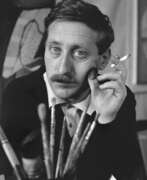

Horst Antes was a German painter, graphic artist and sculptor, a pioneer of the new figurative painting in Germany.
After studying at the Karlsruhe Academy of Fine Arts from 1957 to 1959, Antes taught there himself and later became a professor there.
Antes became known for the Kopffüßler (head-foot) image, which has been a recurring theme in his paintings, sculptures and graphic works since the early 1960s. Antes' work is represented in several major collections in Berlin, Hamburg, Cologne and elsewhere in Germany.
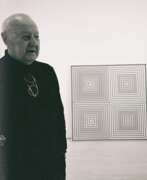

Richard Joseph Anuszkiewicz was a prominent American artist celebrated for his foundational contributions to the Op Art movement. Born in Erie, Pennsylvania, to Polish immigrant parents, Anuszkiewicz's early talent in art earned him scholarships, leading to his studies at the Cleveland Institute of Art and later, the Yale University School of Art and Architecture under Josef Albers. Albers, a pivotal figure in his career, inspired Anuszkiewicz to explore the intricacies of color and geometric forms, steering him away from realism towards a more abstract and mathematical approach to art.
Anuszkiewicz gained prominence in the 1960s, notably through his participation in the landmark exhibition "The Responsive Eye" at MoMA, which played a crucial role in propelling Op Art into mainstream recognition. His works, characterized by vibrant colors and geometric patterns, create illusions of depth and movement, challenging viewers' perceptions and offering a mesmerizing visual experience. His technique was not just about the visual impact; it was a meticulous, mathematical exploration of color and form, aiming to achieve a 'very, very mechanistic geometry' that was nonetheless romantic in its precision and purity.
Throughout his career, Anuszkiewicz's art evolved, yet he remained faithful to his intellectual and analytical approach, focusing on the optical effects of color and shape. His contributions extended beyond painting to include printmaking and sculpture, showcasing his versatility as an artist. Notably, his works are housed in prestigious collections around the world, including the Metropolitan Museum of Art, Museum of Modern Art, and the Whitney Museum of American Art, among others.
For collectors and experts in art and antiques, Anuszkiewicz's work embodies the confluence of scientific precision and artistic expression, offering insights into the profound impact of color and form on human perception. His legacy continues to inspire and challenge the boundaries of visual art.
If you're captivated by the transformative power of Op Art and the pioneering work of Richard Joseph Anuszkiewicz, sign up for updates. Stay informed about new product sales and auction events related to this remarkable artist's oeuvre, enriching your collection with pieces that resonate with history and innovation.


Christiaan Karel Appel was a Dutch painter, sculptor, and poet. He started painting at the age of fourteen and studied at the Rijksakademie in Amsterdam in the 1940s. He was one of the founders of the avant-garde movement CoBrA in 1948. He was also an avid sculptor and has had works featured in MoMA and other museums worldwide.
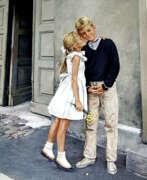

Kurt Ard was a Danish illustrator, painter and printmaker. He became internationally famous for his narrative cover artwork published in popular magazines of the 1950s-1970s, including the Family Journal, the Saturday Evening Post and Reader’s Digest. Ard started his career at various smaller newspapers and worked in the same realistic tradition as his role model, illustrator and painter, Norman Rockwell. During WW II, Kurt struggled to fulfill commission orders. His painting and his reputation and success grew steadily in the post war years. His illustrations soon appeared in major European publications, and he subsequently achieved international fame. Over the course of his career, Ard has sold more than 1000 illustrations to the best magazines in Europe, and to American publications such as McCalls, Good Housekeeping and Redbook. Today, Kurt continues to create exceptional figurative, landscape and seascape paintings with uncompromising authenticity , capturing the charm, beauty and power of these diverse subjects. His work is especially notable for its brilliant light and precise detail.
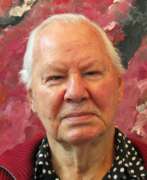

Armando, born Herman Dirk van Dodeweerd, was a Dutch painter, sculptor, poet, writer, violinist, actor, journalist, film, television and theater maker. Armando was his official name; his birth name, the pseudonym as he called it, no longer existed for him. He himself saw his work as «Gesamtkunstwerk», based on his experiences from the Second World War in the vicinity of Kamp Amersfoort.
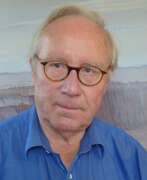

Gerhard Ausborn was a German painter. He studied painting at the Hamburg University of Fine Arts.
Landscapes, ancient sites and modern cities characterise the subject of Gerhard Ausborn's paintings. In parallel, he creates abstract compositions without objects.
The paintings are inspired by impressions the artist gathered during his numerous journeys to many countries around the world. The paintings were not created on location, but always afterwards in his Hamburg studio. They are not intended to be an exact copy of reality, but rather, in memory, what is seen is reduced to the essentials and combined with the artist's own ideas, sensations and experiences.
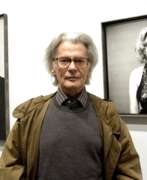

Richard Avedon was an American photographer and artist known for his iconic portraits and fashion photography.
Avedon began his career as a photographer in the late 1940s, working as a freelance photographer for magazines such as Harper's Bazaar and Vogue. He soon became known for his distinctive style, which was characterized by his use of simple, uncluttered backgrounds and his ability to capture the essence of his subjects.
Throughout his career, Avedon photographed some of the most famous people of his time, including Marilyn Monroe, Andy Warhol, and The Beatles. He was also known for his fashion photography, and his work appeared in many fashion magazines, including Harper's Bazaar and Vogue.
Avedon's work was often controversial, as he challenged traditional notions of beauty and fashion. He was known for his willingness to push boundaries, and his work was often seen as a reflection of the social and political issues of his time.
Today, Avedon is regarded as one of the most important photographers of the 20th century, and his work continues to inspire artists and photographers around the world.
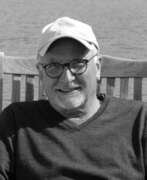

Frank Badur is a German color field painting artist living and working in Berlin and Poikko, Finland.
Badur studied painting in Berlin, in 1973 he opened a studio in Finland and has lived in two countries ever since. He co-founded the group Sistema in 1975 and was professor of painting at the Berlin University of the Arts from 1985 to 2009.
Frank Badur's paintings are characterized by visual clarity, his palette is minimalist - often he uses only two colors in a painting, composed in balanced color fields. Typically, the artist does not use pure colors, but rather mixtures, which he applies up to 30 layers on the canvas. The selection and combination of these colors, which the artist believes are based on both intuition and experience, create spectacular, complex color spaces. However, despite the seemingly strictly formal structure, the composition never follows a mathematical principle.
Frank Badur has been a member of the Berlin Academy of Arts since 1992 and a member of the Association of German Artists.
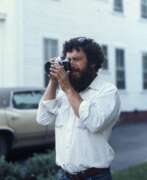

John Baeder is an American painter closely associated with the photorealist movement. He is best known for his detailed paintings of American roadside diners and eateries. His interest in small towns across America began when he was young by photographing old cars and other relics. He started working as an art director in Atlanta for a branch of a New York advertising agency in 1960, and subsequently moved to New York City in 1964. He went on to have a successful career in advertising through the early 1970s, while continuing to paint, draw and photograph on his own time. Baeder left the advertising field in 1972 to pursue his artistic career full-time. The same year, OK Harris Gallery in New York began exhibiting his artworks. Since then, he has had more than thirty solo exhibitions at art galleries. His work includes oil paintings, watercolors and photographs. Baeder’s work aims to chronicle the disappearing aspects of American culture. Baeder is the recipient of the Tennessee Governor's Distinguished Artist Award in 2009.


Georg Baselitz is a German painter, sculptor and graphic artist. In the 1960s he became well known for his figurative, expressive paintings. In 1969 he began painting his subjects upside down in an effort to overcome the representational, content-driven character of his earlier work and stress the artifice of painting. Drawing from myriad influences, including art of Soviet era illustration art, the Mannerist period and African sculptures, he developed his own, distinct artistic language.
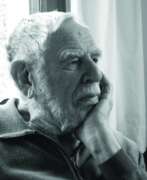

Moritz Baumgartl is a German painter, graphic artist and university professor living in Stuttgart.
Moritz studied at the Stuttgart State Academy of Fine Arts and worked for a long time as an art teacher at the Friedrich Eugens Gymnasium in Stuttgart. Baumgartl founded the art group "Stuttgart School" together with the artists Axel Arndt and Adam Lüde Döring.
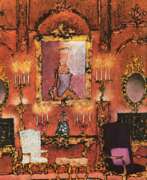

André Beaurepaire was a French artist and scenic designer.
Beaurepaire studied at the École des Beaux-Arts in Tours, and later in Paris at the École Nationale Supérieure des Arts Décoratifs. He worked as a painter and a graphic artist, and also designed sets and costumes for theater productions and films.
Beaurepaire was particularly well-known for his work as a scenographer, and collaborated with many major French directors and choreographers, including Jean-Louis Barrault, Roger Planchon, and Maurice Béjart. He designed sets for a number of classic works of theater, including Shakespeare's "Hamlet" and "Macbeth," Molière's "The Misanthrope," and Jean Anouilh's "Antigone."
In addition to his work as a scenographer, Beaurepaire continued to paint throughout his career, and his works were exhibited in galleries and museums in France and abroad. His paintings are characterized by their vibrant colors and dynamic compositions, often featuring abstract or geometric shapes.
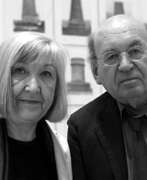

Bernhard (Bernd) Becher and Hilla Becher were German conceptual artists and photographers working as a collaborative duo. They are best known for their extensive series of photographic images, or typologies, of industrial buildings and structures, often organised in grids. As the founders of what has come to be known as the 'Becher school' or the 'Düsseldorf School' they influenced generations of documentary photographers and artists. They have been awarded the Erasmus Prize and the Hasselblad Award.


Erwin Bechtold is a German abstract painter and sculptor. He spent some time in Paris, where he had the opportunity to work with Fernand Léger.
Erwin Bechtold was the founder of the artist's group Ibiza 59, whose members sought to create art free of subjective expression. Bechtold's paintings from this period were characterised by minimal geometric forms and the use of a monochromatic colour palette.
Later in his career, Bechtold began experimenting with sculpture, creating large-scale works that explored the relationship between form and space.


Larry Bell is an American contemporary artist and sculptor. He is best known for his glass boxes and large-scaled illusionistic sculptures. He is a grant recipient from, among others, the National Endowment for the Arts and the Guggenheim Foundation, and his artworks are found in the collections of many major cultural institutions.
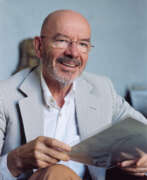

Mario Bellini is an Italian architect and designer. After graduating from the Polytechnic University of Milan in 1959, Bellini pursued a career as an architect, exhibition designer, product designer, and furniture designer, during the Italian economic boom of the late 20th century. Bellini has received several accolades in a variety of design fields, including eight Compasso d'Oro awards, and the Gold Medal for Lifetime Achievement by the Triennale di Milano. In 2019, the Italian President of the Chamber of Deputies, Roberto Fico, awarded Bellini a career medal, in recognition of his contributions to Italian architecture and design.


Saul Bellow, real name Solomon Bellows, is a Jewish American writer and Pulitzer Prize and Nobel Prize winner.
Sol Bellow was born in Canada to Jewish immigrant parents from St. Petersburg, Russia, and grew up in Chicago. He attended the University of Chicago and Northwestern University, majoring in anthropology and sociology. Chicago was the setting for many of his novels of the 1970s and 1980s. In 1993, he took a position in the English Department at Boston University.
Bellow wrote his first book, The Dangling Man (1944), while serving in the Merchant Marine during World War II, and he published the novel The Victim in 1947. Saul Bellow is considered one of the most important Jewish American writers who wrote after World War II. Like his predecessors, he offers a Jewish perspective on the themes of alienation and otherness in the difficult postwar era of fragmentation, translating the Yiddish American experience into English.
Bellow has received the world's highest honors for his works. In 1954, his novel The Adventures of Augie March won the National Book Award for fiction. In 1975, the Pulitzer Prize for his novel The Humboldt Gift; the International Herzog Literary Award; and the Croix de Chevalier des Arts et Lettres, France's highest literary honor for non-citizens. In 1976, Bellow was awarded the Nobel Prize for Literature.


Werner Berges is a contemporary German artist and graphic artist, a representative of Pop Art.
Typical of him are bright colours and sharp outlines, the use of spot painting and the strips that give his works the character of reproductions. The heroes of his paintings are pop and film stars, advertising types of women and photo-models, whose erotic poses and captivating glances Werner Berges emphasizes with a powerful combination of colours, points, stripes and collage. At the core of his drawing is a "graphic framework" that exists independently of the overlay of colours on the canvas. The artist tries to show himself to be completely independent and impartial about what he has created and only signs his work on the back of the canvas.


Miguel Ortiz Berrocal was a Spanish figurative and abstract sculptor. He is best known for his puzzle sculptures, which can be disassembled into many abstract pieces. These works are also known for the miniature artworks and jewelry incorporated into or concealed within them, and the fact that some of the sculptures can be reassembled or reconfigured into different arrangements. Berrocal's sculptures span a wide range of physical sizes from monumental outdoor public works, to intricate puzzle sculptures small enough to be worn as pendants, bracelets, or other body ornamentation.
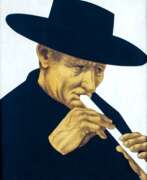

Arne Besser is a contemporary American artist. He received training as an artist at the Art Center School, Los Angeles. There he studied with John Audubon Tyler and Lorser Feidelsson. Beser’s approach to Photo-Realism is to draw from the urban landscape and nature a succinct “set like” image of reality. His city scenes depict New York street life alive with trading and traders, prostitutes and junkies looking for a fix. These visual images iconify the underside of urban life in a way that elevates this point of view to an almost mythic level.


Charles Bézie is a French artist, representative of the neo-minimalist movement, who lives and works in Paris.
He graduated from the Académie Joulian in Paris and initially tried to create in his paintings a contrast to Malevich and Mondrian. However, he later changed his technique and style. Bezie applies different layers of paint to the canvas, partially overlapping each other, and it is the light that reveals the nuances and shades of the thin and wide stripes. This is what he calls "background animation. Bezie continues the tradition of constructivist art that emerged in the early 20th century.


Gastone Biggi was an Italian painter, sculptor, writer, poet, and musicologist.
Biggi combined painting with his activities as an art writer and musicologist. In 1962 his key work The Birth of the Point was published, theorizing the study of the sign module, which he would develop throughout his life. That same year he formed Group 1.
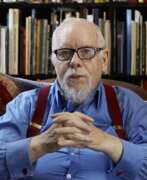

Peter Thomas Blake is an English pop artist. He co-created the sleeve design for the Beatles' album Sgt. Pepper's Lonely Hearts Club Band. His other works include the covers for two of The Who's albums, the cover of the Band Aid single "Do They Know It's Christmas?", and the Live Aid concert poster. Blake also designed the 2012 Brit Award statuette.
Blake is a prominent figure in the pop art movement. Central to his paintings are his interest in images from popular culture which have infused his collages. In 2002 he was knighted at Buckingham Palace for his services to art.
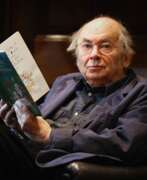

Quentin Saxby Blake is an English cartoonist, caricaturist, illustrator and children's writer. He has illustrated over 300 books, including 18 written by Roald Dahl, which are among his most popular works.[a] For his lasting contribution as a children's illustrator he won the biennial international Hans Christian Andersen Award in 2002, the highest recognition available to creators of children's books. From 1999 to 2001, he was the inaugural British Children's Laureate. He is a patron of the Association of Illustrators.
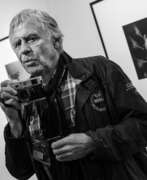

Dieter Blum is a contemporary German photographer who has worked for well-known and influential publications (German magazines Spiegel and Stern, American Time, Vanity Fair). At the beginning of his career he took pictures of American cowboys, now he prefers to work with musicians and ballet dancers.
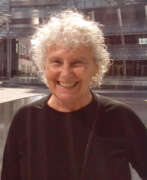

Renata Boero is an Italian artist and restorer.
After completing her liberal arts education in Switzerland, she worked at the Palazzo Rosso Museum in Genoa. It was during the restoration of old tapestry canvases that Boero began to experiment with the use of natural substances in painting. She uses plant elements in her artworks and installations.
